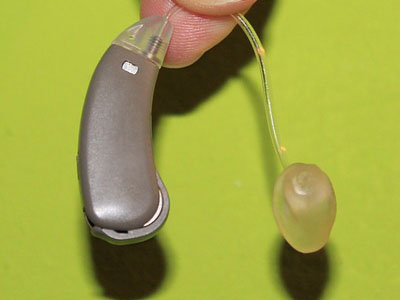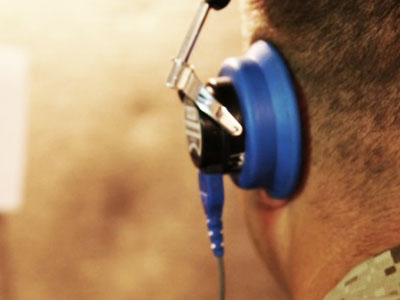Hearing Aid Styles

What is a hearing aid?
A hearing aid is a very minute electronic device that people with hearing problems use in or behind the ear. It enhances hearing by transmitting voices louder and clearer so that a person with hearing loss can listen, communicate, and participate more fully in daily activities, even improving social life. A hearing aid can help people hear more in both quiet and noisy situations.A hearing aid has three basic parts: a microphone, an amplifier, and a speaker. Microphone picks up sound waves, processes it electronically and amplifies using digital technology.
Hearing aids do come in a number of styles, which differ in size and the way they are placed in your ear.
Behind the ear (BTE)
Hearing aids consist of a hard plastic case worn behind the ear and connected to a plastic ear mold that fits inside the outer ear. The electronic parts are held in the case behind the ear. Sound waves travel from the hearing aid through the ear mold and into the ear. BTE aids are used by people of all ages for mild to profound hearing loss.BTE
Behind - the - ear:Fits snugly behind the ear and is attached to a custom earpiece
In The Canal Hearing Aid ( ITC)
ITC aids are smaller, filling only the bottom half of the external ear. The aid cannot be seen when face to face with the user.ITC
In - the - canal: small enough to fit almost entirely in your ear canalCompletely In the Canal Hearing Aid (CIC)
CIC aids are generally not visible unless the viewer looks directly into the user's ear. CICs are usually not recommended for people with good low frequency hearing, as the occlusion effect is much more noticeableCIC
Completely - in the - canal: Fits deeply inside your ear canalOpen fit hearing aids
Open-fit aids fit behind the ear completely, with only a narrow tube inserted into the ear canal. These aids leave the ear canal open, so they are best for mild to moderate high-frequency losses where low-frequency hearing is still normal or near normal.Open Fit
Ultra - thin tubing is virtually invisibleReceiver In the Canal/Ear (CRT/RIC/RITE)
On a first glance, these devices are similar to small BTE aid. There is however one crucial difference: The speaker ('receiver') of the hearing aid is placed inside the ear canal of the user and thin electrical wires replace the acoustic tube of the BTE aid.There are some advantages with this approach: primarily being the sound of the hearing aid is arguably smoother than that of a traditional BTE hearing aid.Most cosmetically acceptable hearing device types
RITE devices are suited to "open fit" technology so they can be fitted without plugging the ear, offering relief from occlusion.



